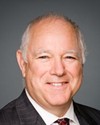That's no problem.
As I was saying, the majority leaving the reserves would already have civilian employment. The unemployment rate for veterans is equal to the general Canadian rate—8%. The unemployment rate for veterans released due to injuries is about 15%.
Employment issues generally cluster around certain groups of veterans: younger veterans, those with fewer years of service, those in the lower ranks, and those who are medically released or involuntarily released.
The life after service study shows that 89% of regular force veterans released between 1998 and 2007 worked after release. The breakdown in numbers of veterans after release was as follows: 52.9% worked at a job or business; 20% worked at some point but were not currently working; 7.7% were looking for work; 10.3% were retired or not looking for work; 3.7% went from the regular forces to full-time work in the reserve force. The others included those who were not able to work, for example, because they were on disability, were caring for a family member, or were attending school.
Most veterans leaving the military reported adjusting well and beginning a normal life in the civilian world.
There are three key elements to VAC support in terms of employment: ensuring qualified veterans who wish to work at VAC have the opportunity to do so; providing benefits and services in a wide range of programs; and working with other government departments and not-for-profit and private sector groups to help people understand who our veterans are and what their needs are and to help develop opportunities to support veterans' employment needs.
Two key VAC programs to support releasing Canadian Armed Forces members are the career transition services and the vocational rehabilitation programs. In 2013 Minister Fantino announced changes that give more than 1,300 veterans taking part in our vocational rehabilitation program greater flexibility to access the tools they need for their training, which will cut down on wait times related to vocational assessments.
As a result of these changes, an expanded list of training expenses, such as those for required computer software, electronic books, campus parking, and training equipment are now considered in individual vocational rehabilitation training plans. Veterans are now also able to claim individual vocational rehabilitation expenses through an overall program funding envelope to a maximum total value of $75,800 per person. In the last five years, 3,381 participants have accessed vocational rehabilitation and vocational assistance through our national contract. As of June 30, 2014 there were 1,355 active participants.
Career transition services help veterans and their survivors find civilian employment, and provide funding for related training and career services consultation. They are available for up to two years after a veteran's date of release from the Canadian Armed Forces. To date, 1,787 veterans have accessed the program. As part of Veterans Affairs Canada's initiative to cut red tape, the government has streamlined the service delivery model for the program by giving eligible veterans or survivors their choice of career transition services that best meet their needs. As well, VAC will reimburse up to $1,000.
VAC has also taken several steps to ensure that eligible veterans are able to apply for a position at Veterans Affairs Canada if they choose to. They have expanded the area of selection for job competitions to allow the largest number of Canadian Armed Forces personnel to apply; reviewed all the work descriptions in Veterans Affairs to assess which positions could benefit from Canadian Armed Forces experience; and added the relevant Canadian Armed Forces experience as an asset qualification to these positions.
We are working with the Public Service Commission and others to implement new legislation to support veterans seeking positions in the federal government. This initiative is called “Priority Hiring”.
The bill proposes to allow honourably released Canadian Armed Forces members and veterans to be given increased access to job opportunities in the public service.
The introduction of this legislation means that veterans whose medical release is deemed to be attributable to military service will be eligible for statutory priority hiring status in the federal public service.
Veterans who have been medically released from the Canadian Armed Forces will now be eligible for up to five years of priority hiring status in the federal public service. Veterans who have been honourably released and who have had at least three years of military service will now receive preference in external advertised federal public service employment processes. Canadian Armed Forces serving personnel and veterans who have been honourably released with at least three years of military service will now be able to view and participate in internal advertised public service employment processes.
As for the next steps, Veterans Affairs Canada is working with the Department of National Defence and the Public Service Commission to ensure that Canadian Armed Forces members and veterans will benefit from those changes when Bill C-27 comes into force. The changes will take effect once the bill has received royal assent—probably in 2015.
I will now go on to the hire a veteran program.
I will explain what this program is about.
Through the hire a veteran initiative launched in December 2012, Veterans Affairs Canada partners with corporate Canada to help veterans and releasing Canadian Armed Forces personnel find civilian jobs. The hire a veteran employer partners send their employment opportunities and/or links to career pages to us, and we share the posting with a network consisting of front-line staff, our national vocational rehabilitation service contractor, and the Canadian Armed Forces. These postings are then shared with job-seeking Canadian Armed Forces personnel and veterans.
The hire a veteran website includes information for both job seekers and employers. To assist releasing military personnel and veterans in finding employment, the website provides links to Employment and Social Development Canada tools, public service priority hiring information, and other relevant sites.
The hire a veteran website also provides information for employers regarding the value veterans bring to the civilian workforce and information on the Canadian Armed Forces, such as military ranks, occupation, training, and skills developed in the military. This information helps employers better understand the military culture from which our veterans are transitioning. Therefore, employers are better positioned to help these veterans integrate into the civilian workplace.
Through the hire a veteran initiative, over 160 employers have committed to hiring veterans. Here are some examples of our employer partners: Bell Canada, Target, Walmart Canada, Cenovus Energy, Toronto's Hospital for Sick Children, Intuit Canada, Cabela's Canada, Mount Allison University, Queen's University, and the Canadian National Railway.
Our employer partners would be able to contribute a valuable perspective to your committee in its work. In particular, we would suggest that you consider inviting Bell Canada, Target, Intuit Canada, or the Canadian National Railway to appear before the committee.
To sum up, I mentioned our partners helping with this important file. To maximize civilian employment opportunities, Veteran Affairs works with the Canadian Armed Forces in partnership with two key non-profit organizations: the True Patriot Love Foundation and Canada Company.
The department's partnership with Canada Company is primarily through the military employment transition program, which is creating direct links between Canadian Armed Forces personnel, reservists, and veterans who are seeking jobs in the civilian workforce, and employer partners who want to hire transitioning military personnel and veterans for their valued skill sets.
Through the military employment transition program, employer partners are required to report on veteran hires through an employer partner memorandum of understanding. Approximately 180 veteran-friendly employer partners have committed to working together to help veterans and releasing Canadian Armed Forces personnel find civilian jobs.
Our other key non-profit partner is the True Patriot Love Foundation, which leads the Veteran Transition Advisory Council. Established by the Minister of Veteran Affairs, the council is mandated to identify challenges and barriers faced by Canadian veterans during the transition from military to civilian employment. The council includes representatives from leading national companies, who work to raise awareness of the skill sets that veterans have to offer the private sector.
In the fall of 2013, the Council made interim recommendations regarding the transition to civilian employment, and, as a result, the council established five working groups related to these recommendations. The working groups are focusing on a one-stop-shop web portal, a marketing campaign, supported employment, a veterans membership program, and certification.
This concludes our presentation. We would be pleased to take any questions.




